Commercial Air Duct Installation and Repair
Check-up and Maintenance
Get Your Questions Answered
Save on Energy Bills
The Valley Comfort Way
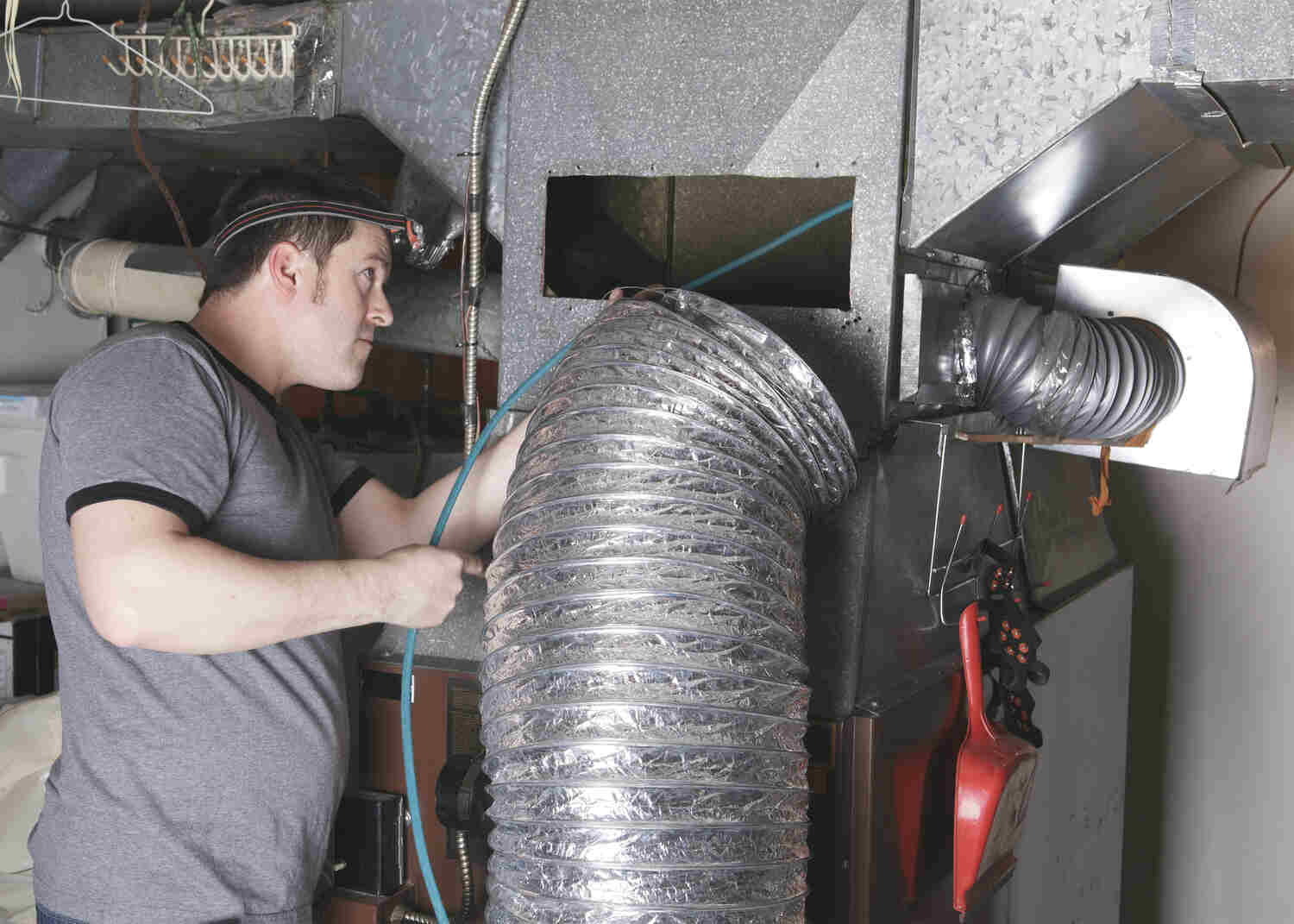
Experienced
Our technicians are skilled to keep your business in a healthy environment by maintaining your air ducts with quality service.
Available
No matter what service is needed, we commit ourselves to your HVAC journey, 24/7, in order to ensure you a high-quality air duct system.
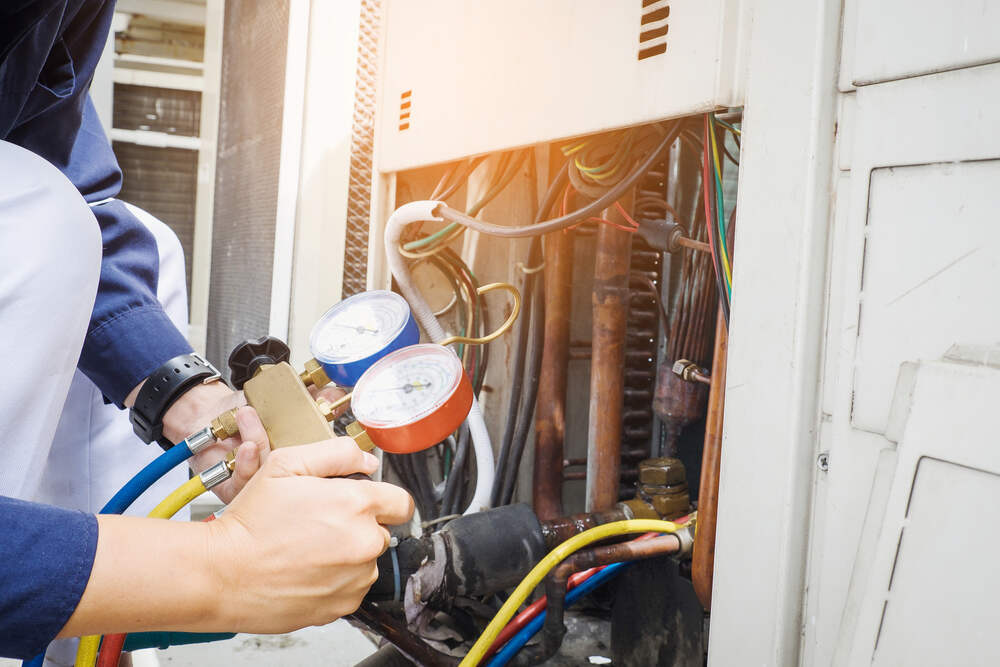
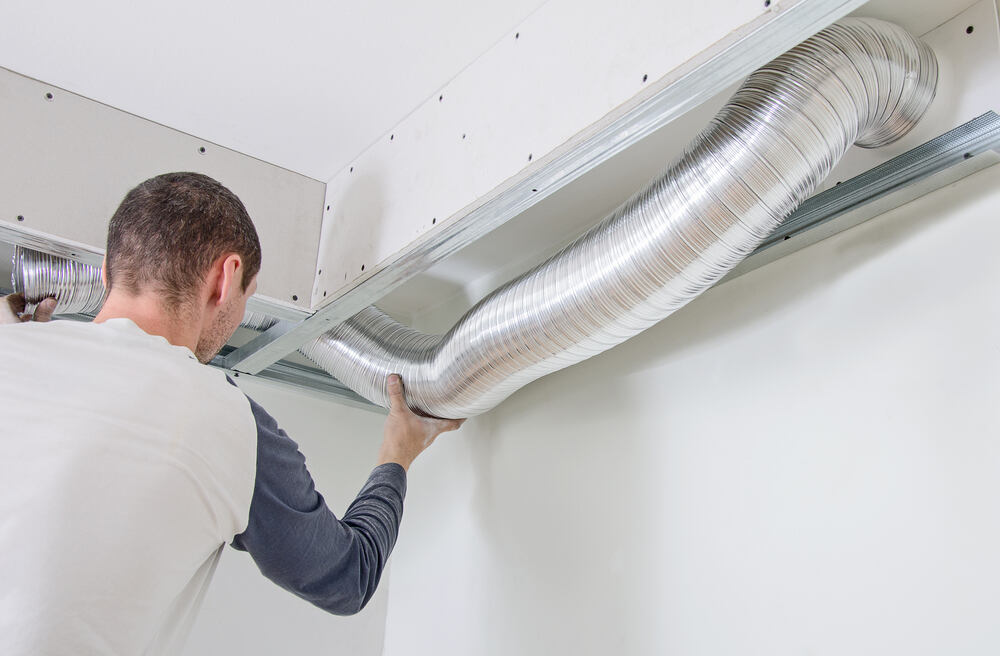
Reliable
As a family business, we strive to give you the most dependable, cost-effective plan that works for you and your business.
Locations We Serve
Sonoma County
- Cotati
- Healdsburg
- Petaluma
- Rohnert Park
- Santa Rosa
- Sebastopol
- Sonoma
- Windsor
Napa County
- American Canyon
- Calistoga
- Napa
- Oakville
- Rutherford
- St Helena
- Union
- Yountville
Marin County
- Novato
- San Rafael
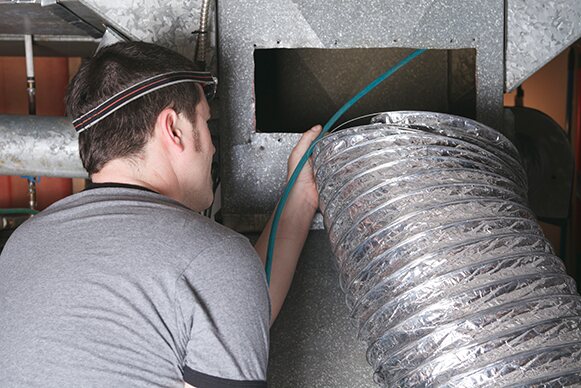
Commercial Air Duct Systems:
When it comes to commercial HVAC systems, it’s easy to focus mostly on the “H” and the “AC” – the heating and the cooling that you and your staff depend on for comfort year-round. The “V” in HVAC, though – the “ventilation” – is a critical component that ties everything together by helping to maintain good air quality while moving air where it needs to be within your building.
Because you don’t often see much of your ductwork, though, it can sometimes be easy to overlook. However, it not only plays a fundamentally critical role in your building’s climate control systems: it can also be a key contributor to their successful function.
While it is your furnace or AC unit that does the all-important work of actually changing the temperature of air brought in from outdoors and within the building, the ducts carry that air to rooms. Though systems without these conduits exist, most large-scale commercial HVAC systems still rely on ducts for efficient air handling.
Here’s everything you need to know about these systems, including how they work, what air duct cleaning involves, and more.
Table Of Contents
Ducting and Air Distribution
How Does a Duct System Work?
Recall that a basic component of any central heating or cooling system is the blower fan, which helps to circulate air through a space. In its simplest form, ducts convey conditioned air pushed by the blower through the system, with vents attached along the way to allow the air to enter rooms. This is most often called the supply, as it supplies your business with comfortable air to moderate the temperature.
There is another set of ducts as well, called The Return. True to its name, return vents and ducts enable the system to draw back in the air that has warmed up or cooled down again for re-treatment and circulation back into the system. Return ducts also serve to assist in maintaining an even pressure gradient across the entire system, which is essential for avoiding high-pressure air leaks in ducts which can lead to decreases in efficiency and spikes in energy usage.
Larger and more complex systems may feature exhaust setups in the return, continually pulling in fresh outside air and only using return air when necessary. In some types of ducting systems, described below, a box known as the “plenum” is attached to the supply output. Plenums allow for cooler air to accumulate and help to the appropriate amount of air pressure for movement through the vents, but they also have another purpose.
Think of the plenum as a “holding tank” that helps to distribute air through a building. Without a plenum, it would be impossible to ensure an appropriate volume of airflow through every duct. Simply connecting one duct to the output and using that as a branching point would create irregular airflow. The shape and layout of the plenum therefore plays a critical role in a ducting system’s effectiveness.
Why is Duct Shape Important?
Have you ever looked at ducting? You’ve probably seen different shapes and sizes, from boxy and rectangular conduits to flexible circular tubing. There is actually a good reason for the variation. First: different shapes are necessary for carrying air to different places in a building when the structure does not allow for a straight-line path to vents.
These shapes are also more accommodating for interior duct equipment, such as turning vanes and dampers. For example, rectangular ducts made from sheet metal are more suited for housing these parts and for fitting into tight spaces in ceilings and behind walls. Spiral ductwork is easier to use for more gentle turning transitions.
Duct shape matters for energy efficiency too, however. Spiral ductwork can transport the air most efficiently and with fewer leaks owing to its unique construction. Rather than using sheet metal formed into rectangles, spiral ductwork comes in circular or oval shapes with characteristic “spiral” locks that help create an airtight seal inside the duct.
Rectangular and square ducts do not have the same ability to conduct large volumes of air to the same level of efficiency and are more prone to leaks. Most systems are a combination of the two, balanced by professional HVAC contractors to provide the correct system pressure while minimizing leakage.
The Types of Duct Systems
There is no such thing as a “one size fits all” solution for air ducts, especially considering the diversity in commercial buildings. A small café may have a duct system more akin to a residential solution, while a large, multi-story office building will have a much more complex network of conduits running throughout the building. Your contractors will choose a design based on main types of ducting systems one of the some of which are:
A series of ducts that radiate outward from a single central plenum, ideal for spaces where a single unit can reach the entire area without too much loss of pressure or velocity. More common in residential applications, but some small-scale commercial uses are viable also.
Which system is right for your building is best discussed with a professional. The shape of these systems can also have an impact on the way you approach air duct cleaning for your business, as some may be more complex to clean than others.
How can Ducts Create Different Zones?
Because ducting runs throughout your building, it is responsible for controlling the climate in many different spaces. In some larger buildings, a single unit is not enough to supply the entire space with cool air, and multiple systems with their own ductwork will be necessary instead. Climate zones, or areas that can be heated and cooled separately from one another are much easier to create when using separate systems like this. However, does that mean that you can’t enjoy the benefits of a zoned system without investing a large sum in a complex, multi-unit system?
No. As a matter of fact, there are several ways to approach zoning, from adding ducts to using items called dampers to create zones supplied from the same central air handler. Read on below for more information about how duct zones work and how they can provide benefits for your business.

Is Air Duct Cleaning Worth it?
Over time, air ducts become very dirty and have an impact on the ability of air to flow smoothly through the system. Likewise, dust and the growth of mold can impact the health of those breathing the air. Periodic cleaning is a good idea, especially for very large buildings, but air duct cleaning is not a DIY job. Special tools are necessary to carry out this vital maintenance task appropriately and without damage. Read on to find a complete guide to air duct cleaning information at the end of this guide.
What about maintenance? For the most part, your ducts won’t need much unless your technician detects a problematic leak. Leaking can happen when aluminum sealing tape wears out, or when a portion of the ductwork suffers damage somehow. While all ductwork eventually does need replacement, most systems do not need to be replaced all at once. Periodic inspections and maintenance will instead prove sufficient for identifying when action is necessary.
Dust Mites
Dust mites are tiny insects that feed off things such as the tiny flakes of dead skin found in airborne dust, and they exist almost everywhere. Can you imagine one place where there is never a shortage of dust for these tiny bugs to feast upon? If you guessed the ducts, you’re right – and dust mites, along with the dust itself, can negatively impact occupant health because their waste products trigger allergic reactions.

Mites aren’t the only pests that can affect a building’s ducts. Roaches and spiders can take up residence, and even larger animals such as rats or raccoons can infiltrate your ductwork. The waste these creatures generate can negatively impact the air quality of your building, and they may even cause damage to the ducts. Removing them promptly is important, but so too is engaging a professional for air duct cleaning and sanitizing. This service helps reduce the impact of mites and other pests while keeping the air you breathe cleaner.
How can Ducts Create Different Zones?
When ductwork runs exterior to the building, the elements can take a toll on the material and its insulation. Over time, rainwater and humidity can penetrate this space and begin to degrade the material. Mold growth follows, which then carries spores into the building and creates a more widespread problem. Today, exterior metal cladding is growing in popularity for both new installations and retrofitting works. By cladding the ductwork on your roof in aluminum or another material, you can not only improve its insulating ability, but the system remains protected for years to come. Cladding is an increasingly critical part of every new ductwork job.
Heating and Cooling Zones
In large buildings using commercial HVAC systems, there is rarely ever a need for a single unified temperature across the entire building. Some spaces will remain unoccupied during the day and should not be actively climate controlled, while others may need heating and cooling on demand throughout the day. Zoning is the solution to this imbalance, and a properly configured duct system is essential for creating zones.
Zone Heating & Cooling
As mentioned above, large buildings face diverse heating and cooling needs. Trying to approach the problem by supplying air to every room all the time is both wasteful and inefficient, and will not allow for independent temperature control. A zone system instead allows for some rooms to be fully treated, others to be partially treated, and some spaces left warmer or colder as needed. In other words, an active zone is one that receives air from the duct system; an inactive zone does not.
The Zone System
In the most common setup, swinging metal valves inside of the ductwork called “dampers” work to create zones by blocking the flow of air as needed. For an inactive zone that does not require conditioning, the damper will fully close and prevent air from exiting vents in that space. Otherwise, the damper will partially or fully open depending on how much air is necessary to achieve the desired temperature in a given zone. Thus, different areas of the building operate independently from one another.
Savings
It’s not hard to see how this could start to help save money on your monthly utility bills. There are a few key ways zoned HVAC saves money:
- The HVAC system does not need to run at full capacityto cool unoccupied rooms, and thus will run less often, using less energy and driving your monthlYbijis down.
- Less wear and tear on the system as a result recluééd operation translating into savings on maintenance and replacement costs.
- More stable temperatures in active zones requiring less run time.
We are Proud to Offer Financing Options for Our Customers
Adding Additional Zones
One downside to zoning is that it requires a large amount of special hardware to work correctly if a business does not want to add separate ducts for every zone. However, it is possible to retrofit existing installations with the dampers necessary for this type of fine-tuned control. Unfortunately, it can be more expensive, as it requires accessing the ducts in many different areas, often behind walls. To prevent excessively high air pressure within the system when not all dampers are open, bypass ducts may also be necessary. Replacing the ducting with a zone-ready system may prove to be more cost-effective.
Multi-Zoned HVAC Systems
How do the dampers know when to open and close? Each zone corresponds to a unique thermostat set up to sense the temperature in that zone of control and to mechanically operate the damper. When a user comes into an inactive zone and lowers the thermostat setting from 80 to 75, the thermostat opens the damper and allows air to flow into the room again. There are also now Internet of Things-enabled devices that allow for the remote control and monitoring of climate zones for added efficiency.
Picking the Right System for Your Business
While most buildings already have existing duct systems, they may not be the most efficiently designed or operationally effective installations. Likewise, it may be time for you to replace old ducts for air quality or energy efficiency purposes. There are several steps involved in making the right choice for your company.
The Influence of the Building’s Structure
The structure of a building is the deciding factor more than anything else: the layout of the building, the amount of space available, and the position of your AC or furnace within that building. You cannot run large ductwork through areas that are too small.
Likewise, zoning your system correctly will depend on proper placement of ductwork. Because every building features a different design – and you may not even occupy the entire space yourself – an expert’s opinion is necessary to ensure that the building’s influence on ductwork design receives the required amount of consideration. Tall buildings or structures with many interior rooms will necessarily need more complex systems that must use care to preserve efficiency.

Are Ducted Systems the Right Choice For You?
With all this information about ducts, it should be easy to see that they are a versatile system that can provide a great deal of utility and customization to many types of comrnercial spaces. However, are they the right choice for your building? The answer to that question depends on many factors, including the system you need, the amount of space you have available, and your budget.
In some cases, a ducted system will prove too expensive or cumbersome to install, especially in buildings that would require extensive retrofitting.
Mini-splits and ductless air conditioners can often provide the best results in these scenarios by delivering zone control without the need to retrofit an existing system. However, ducts can deliver a higher volume of air, and a well-balanced system can prove to be more cost-effective over time, even when factoring in maintenance such as air duct cleaning and its cost. To arrive at the correct answer for your business, an in-depth investigation of your existing HVAC systems along with a discussion of your priorities is a necessary next step.
Potential Cost Trade-Offs
When exploring your options for new ductwork, consider that there will be a few occasions when you may need to make trade off decisions between cost-effectiveness and performance. Some of these scenarios include:
Material Performance vs. Cost
What type of material should you use for your ducts? That depends on how much you want to pay – and whether certain materials will perform correctly in your use case. See the overview of ducting materials below.
Efficiency vs. Installation
Do you want the most efficient system possible, or the one that’s easiest (and therefore faster) to install? You’ll need to weigh current and future energy costs against your budget for ductwork.
Zoning vs. Not Zoning
Retrofitting zones to an existing system can be expensive and may not yield energy savings large enough to offset the initial outlay. However, zoning new systems can pay for itself over time.
The Different Parts of the System
Your HVAC contractor will design a system that includes all the necessary duct components for distributing hot or cool air throughout the space as needed. Some of the individual parts they may add include:
- Pipes and trunks
The core components of the duct system that carry the air from one place to another. - Plenums
The initial box-shaped structures that attach to the air handler and creates positive air pressure to force cool or warm air through ducting. - Transitions
The hardware necessary for moving air around bends, which may include vanes (which channel air without losing pressure), take-offs, and more. There are many types of duct transition - Dampers
The mechanical switches that open and shut to allow air to flow into different climate zones.
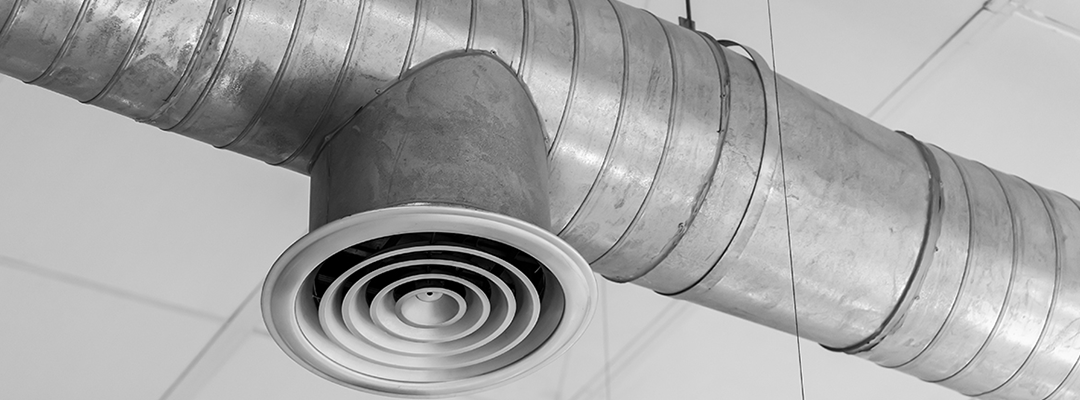
What Materials do Ducts Typically Use?
There are three primary classes of materials used to create ducts:
- Fiberglass
- Metal
- “Flexible” Plastic and Metal Ducting
The choice of material depends on the location of the duct, its size and shape, and where it must travel. Since not all ductwork is inside, ducting that runs along the exterior of a building, such as on the roof, must be durable and able to stand up to the elements. Galvanized steel or aluminum are often chosen for these purposes due to their ability to resist corrosion. However, they may exacerbate energy loss since they are exposed to the outside air; the appropriate type of cladding can help make a difference. Metal ducts are relatively good at resisting mold incursions, and they are easy to fabricate into the necessary shapes.
Fiberglass
Fiberglass boards covered with a protective and insulating material are more common indoors, where moisture is less of a threat. However, metal ducting lined with fiberglass is also a common choice in many commercial settings due to the reduced noise and better experience they provide for building occupants. However, other drawbacks such as the difficulty in cleaning this type of duct make them less popular.
Flex Ducting
Flex ducting is increasingly popular owing to its cost-effectiveness and ease of use. A flexible aluminum shell encloses a plastic liner with an interior designed for conducting air throughout the space. Flex ducting is best used in small areas and where multiple tricky bends must be navigated. Ultimately, most ducting systems are a combination of different materials chosen as necessary.
Maintaining Your Duct System
As mentioned earlier, ducts can occasionally require cleaning and maintenance. Ductwork does not last forever. and intrusions by pests, foreign debris, and the accumulation of dust can all contribute to degraded performance alongside potential concerns for the health of building occupants. Yet for many, air duct cleaning and its benefits aren’t often a consideration. Consider this final important set of facts to ensure you understand how best to care for your ducting and HVAC systems.
What Does Cleaning Involve?
At first glance, it might seem difficult to clean the ducts: how can anyone reach into the deep interior of a tube hidden in your building and clean it out? That’s where tools such as an air duct cleaning brush and other specialized equipment come into play. When contractors arrive to provide you with this service, they will assess the system overall while also cleaning the integral components of your HVAC system. Then they will begin to access the ducts by removing vent grates and other coverings.
Using special brush attachments, powerful blowers, and strong vacuums, technicians will remove dust, debris, and even sanitize the ductwork to kill any mold present in the system and help to prevent it from recurring soon after the cleaning. The air duct cleaning brush system is incredibly robust and works to fit perfectly inside the duct so that it does not miss any crucial spots.


How Often Do You Need Cleaning?
There is no hard and fast rule on when you should call for cleaning, and the EPA says that there are as yet no clearly proven benefits to cleaning ducts on a schedule, there will be a time when it becomes clear that you should seek help. Likewise, the EPA notes that preventative maintenance is essential. Changing filters and preventing dust infiltration in the first place is essential, but so a periodic visit from an air duct cleaning technician can help to prevent that buildup from occurring in the first place. Based on what we have seen over the course of many duct cleaning jobs, it is advisable to have your ducts inspected semi-annually and cleaned once a year.
It is Advisable to Have Your Ducts Inspected Semi-annually and Cleaned Once a Year.
If you start to spot signs that say you might need cleaning, be sure to reach out to a qualified HVAC professional to discuss your requirements. With the right design, expert installation, and occasional maintenance, your ducts can provide you with years of efficient and effective service.
Valley Comfort Commercial Air Ducts
While air ducts may be hidden behind-the-scenes, they are vital to your HVAC system as a whole. Be sure to keep your air ducts cleaned and checked regularly to maintain the air flow within your building.

At Valley comfort, we ofer services to install, maintain, and repair your commercial air ducts with time and care.
Request a Consultation
Please complete this form:
We serve Residential and Commercial customers in the following counties and cities
Sonoma County
- Cotati
- Healdsburg
- Petaluma
- Rohnert Park
- Santa Rosa
- Sebastopol
- Sonoma
- Windsor
Napa County
- American Canyon
- Calistoga
- Napa
- Oakville
- Rutherford
- St Helena
- Union
- Yountville
Marin County
- Novato
- San Rafael
